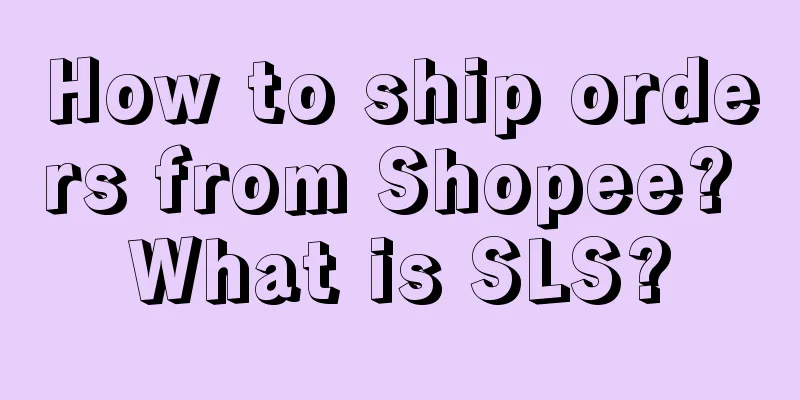Long article review: 5 tips for successful incentive systems in 18 Internet benchmark products

When it comes to user activity, the first thing that comes to mind for Internet people is "establishing a user incentive system." For example: limited-time benefits for new users, rewards for continuous tasks for loyal users, recall activities for lost users... However, in actual applications, due to limited coverage and difficulty in sustainability, it is difficult to effectively attribute the results when reviewing the results. Establishing a comprehensive user incentive system is costly and time-consuming. Should we build one? How to evaluate the effect? How to optimize it? Today, we will explore the user incentive systems of 18 domestic and international benchmark products, review the key points of their designs from a disassembly perspective, summarize the features of 5 creative incentive programs, and provide application suggestions. Without further ado, let's go straight to the main text. Enjoy: 01 Several issues that need to be determined before building a user incentive systemWhat is the incentive system? What is incentive? “Driven by certain incentives, by setting a series of reward and punishment rules, users are encouraged to voluntarily do what the product expects them to do, and these behaviors are solidified into a habit through continuous feedback.” The key points of this definition are: incentives, reward and punishment mechanisms, voluntariness, feedback, and habits. The user incentive system has eight driving forces:
Incentives can be divided into three categories:
The above theoretical definition comes from Shen Yue, the current 360 product director. Is an incentive system necessary? Sanjieke P3 operation class has a summary of scenarios that require an incentive system , which is generally recognized by the industry:
Under the premise of a certain number of users, the following products may not consider the user incentive system (products that users use for a short period of time or very rarely, such as):
User incentives permeate every aspect of the product, and the incentive system is a specific form of presentation. The user incentive system includes: growth level system, points virtual currency system, task medal system... In addition to the system, product details and optimization of marketing copy also play an important role in user motivation. 02 Analysis of domestic and international benchmark incentive system solutions1. Summary in one table: 18 product incentive system solutionsWhat kind of incentive system solutions are used for products of different business entities such as life services, travel, shopping, information, games, etc.? I investigated 18 benchmark solutions at home and abroad : Alipay, Dianping, Didi, JD.com, Taobao, Bilibili, Notion, Canva... It is not difficult to find that most platform-based products have both a tier system and a points system , and differentiate tier benefits and points redemption benefits. Common tool-based products rarely use a complex tier system, with only a distinction between free and paid versions. Growth systems can also be established in paid versions to promote high-value user activity and renewal. 2. Detailed analysis: 5 types of user incentive systems for mainstream productsWhat kind of users are motivated by incentives? Or how effective are they? We can analyze this from the perspective of product type: in terms of purely redeemable material incentives, e-commerce products are more effective than content products. For content products, if decision makers simply understand the incentive system as money and prizes, then no matter what form of incentive is used, it is equivalent to giving directly and asking directly, and it is doomed to be difficult to return. Next, let’s look at the key designs of various incentive system solutions: 1) The level system and the points system coexist, and the tokens are independent of each other, with differentiated level privileges and points mall benefits Case: Alipay The Alipay user incentive system mainly consists of two parts: membership level is related to user privileges, graded by growth value, and re-rated every year; points are used for on-site redemption and consumption discounts. Level system : All users are included in the non-paying membership level, with a total of 4 levels, and the privileges of each level are constantly improving.
Points system : independent of the level, but also displayed in the member center.
2) The level system and the points system coexist, the tokens are unified, and there are differentiated level privileges and points mall benefits Case: Early Alipay (2018) At that time, the Alipay membership system consisted of two aspects: points and levels: points were mainly used for on-site redemption, lottery and other activities, and the consumption of points did not affect the level upgrade; (Ant membership) levels were related to user privileges, discount levels, etc., reflecting differentiation. Level system : Users can see their personal points data and level status. Below the points data is a section for earning points and upgrading levels to tell users how to earn more points and obtain a higher level.
Points system : Users earn points through first activation and daily behavior, mainly through repetitive operations to earn points. The maximum number of points that can be obtained is 4,650 points per month, and the points will be reset at the end of the year. The maximum total amount of regular points is approximately 55,800 points per year. The points export of Ant members has the following characteristics:
3) Only user levels and level privileges, no points system Case: Zhihu Zhihu has created a user system where everyone is a creator: points for creation are used as tokens, and rights and interests can be obtained after reaching a certain level. Level system : Users can obtain creative points by completing creative tasks, and accumulate creative points to upgrade; each level can receive different benefits, such as community core benefit trials or membership vouchers. Remove the points system, collect privileges in level privileges, encourage users to participate in creation upgrades, and abandon active behavior guidance. 4) No user level, only experience points and points are retained. High experience points can get member discounts, and high points can be used as discounts to offset cash Case: Taobao Taobao has two main points systems. Although there is no level design, the Taobao points are tied to purchasing behavior and core 88 membership. The discounts for members with high Taobao points are deeply rooted in people's hearts and have a strong sense of value. Taobao coins are bound to active behaviors unrelated to ordering, including a discount mechanism to enhance the value of points, complete a virtuous cycle, and encourage users to place orders multiple times. Points system (Taoqi points) : It is a subdivision of the general level concept in the original "VIP system", dividing it into three core indicators: purchase, interaction and reputation, aiming to better encourage users to participate in interaction and sharing. If the Taoqi points are > 1000, 88 yuan is required to purchase VIP membership; if the Taoqi points are < 1000, it costs 888 yuan. Points system (Taobao coins) : Taobao coins activities advocate micro-profits by giving discounts to help stores attract target users accurately and efficiently, and increase revenue through joint purchases and accumulation of repeat customers. 5) Remove non-paying user levels, incorporate paid growth membership levels, and coexist with a points system Case: NetEase Cloud Music NetEase Cloud Music is mainly composed of paid membership levels and a points system: the paid membership level belongs to the growing membership, and users can participate in level upgrades only after successful payment. Continuous renewal can lead to continuous upgrades and obtain level rights in addition to membership rights; the points system is independent of membership and is tied to active behavior. Level system (paid member growth level) : Vinyl members and SVIP members share the membership growth level. Continuous renewal can continuously upgrade and obtain additional level benefits. If renewal is cancelled, the level cannot be maintained and all level privileges will be lost. Points system : independent of membership, but tied to active platform behavior, the points mall can be exchanged for various platform benefits and physical rewards. 03 Application suggestions for various solutionsThere are so many incentive system solutions. How can you choose the one that suits your product? There are a thousand Hamlets in the eyes of a thousand people. Let's try to ask ChatGPT, the most popular one, to see its judgment criteria: From the five dimensions of " user behavior goals, cost-effectiveness, competitors, sustainability, and personalized needs ", we can make a brief summary of the five types of incentive system solutions in the previous section. With it, I hope it can help you quickly determine how to choose and have a reason when writing the plan (to convince the boss). 04 EndingShould growth rely on the charm of the product itself, or on operations to attract new users, promote activation and recall? Should we say goodbye to unsuitable users gracefully? Or should we do everything we can to retain them and then solve their needs? The user incentive system is not created for the sake of getting by. The essence is to promote user activity and achieve our current core business goals. The user incentive system must be based on data and continuously adjusted and optimized with data. Excellent user operation is to add a suitable user incentive system to the product, and top user operation is to make the product the best incentive for users. The above is the content of "Incentive System Solution Inventory and Application Suggestions". The reference comes from user growth work practice & research. If you have different opinions, please leave a message in the comment area below for discussion. Next time I would like to talk to you about Duolingo, which is on a growth spree, and how we can use its data model to break through the growth dilemma. Stay tuned! |
<<: 618, how are the new consumer brands doing?
>>: Brand, the greatest concept in business history
Recommend
Talk about the changes in commercial bank retail business and private domain practices
For many industries now, private domain building i...
The new seven deadly sins of brand advertising have emerged! Are you guilty?
In recent years, advertising has become more and m...
Find the breakthrough point, it depends on the number one position
What is the most important factor for a brand to s...
Uncovering the secrets of data management in the subsidy war
This article systematically analyzes the basic bus...
The first batch of bloggers who entered Ailao Mountain have already failed
Recently, Yunnan's Ailao Mountain has unexpect...
It’s amazing! It turns out that the RFM model can be used in this way.
RFM is a very traditional data analysis model. How...
What is the difference between Amazon removal fees and disposal fees? How is the disposal fee calculated?
Nowadays, many friends choose to open stores on Am...
Lazada store opening process and cost introduction
When doing cross-border e-commerce, choosing a pla...
Has the “Hope of the Audience” video account realized Tencent’s short video dream?
On December 15, at an online internal employee con...
What is the process for entering Alibaba International Station? Attached notes
As the world's leading B2B cross-border e-comm...
Earn a million a year or can’t even make a living, the online literature industry is up and down, and will it eventually flock to short dramas?
This article takes "Post-00s online writers e...
How do Amazon products pay taxes? What are the taxes based on?
As an overseas platform, Amazon's every move i...
Can the new rural "top streamer" bring goods?
In the wave of rural revitalization, a group of ne...
How to do e-commerce on Amazon? Specific methods introduced
Nowadays, many businesses will join cross-border e...
6 core points of making money by selling women's clothing on Douyin
Introduction: The Douyin e-commerce market continu...









